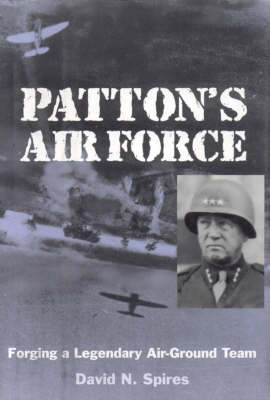From the time the Third Army became operational on August 1, 1944, until the guns fell silent on May 8, 1945, Lt. Gen. George S. Patton's troops covered more ground and took more enemy prisoners than any other Allied amy in northwest Europe. Brig. Gen. Otto P. Weyland's XIX Tactical Air Command (TAC) provided air support every step of the way. Their combined success is something of an anomaly; air-ground relationships are notoriously confrontational and plagued with interservice competition. How did Patton and Weyland work together to achieve such astounding success? Drawing on exclusive access to official records, David N. Spires finds that this success was due to four key developments: the maturation of tactical aviation doctrine, effective organizational procedures, a technical revolution in equipment, and, above all, the presence of pragmatic men of goodwill who made the system work. He focuses on the highly effective personal relationship between Patton and Weyland - men who respected, trusted, and fully relied on each other and their respective subordinates.
This collaboration extended all the way down the chain of command: Patton's ground troops and Weyland's airmen trained together in England, and so by the time they entered combat, they operated together as a single unit. Contrary to conventional wisdom, air-ground relationships in the field can be cooperative rather than confrontational. Today's air and ground officers can continue to benefit from the amazing success of the Third Army and the XIX TAC.
- ISBN10 1588340872
- ISBN13 9781588340870
- Publish Date 17 September 2002
- Publish Status Out of Stock
- Publish Country US
- Publisher Smithsonian Books
- Imprint Smithsonian Institution Scholarly Press
- Format Hardcover
- Pages 384
- Language English
